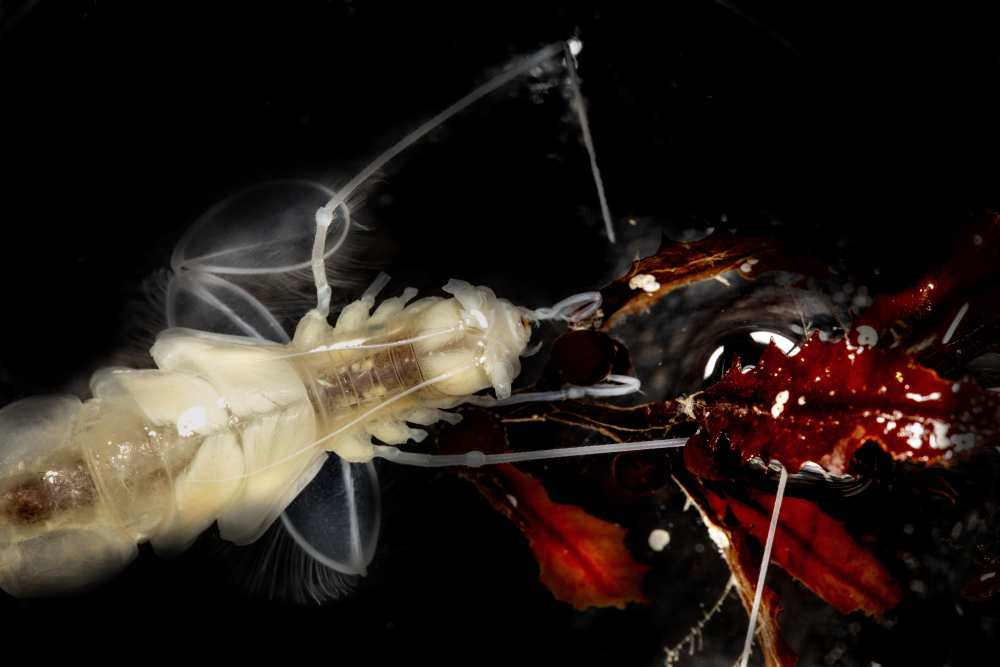Deep in the ocean lives an unusual isopod that’s known to swim upside-down while going backwards with the help of peculiar paddle-like legs as long as your fingers. Scientists recently captured several of these critters on camera, revealing for the first time their surprising snack of choice: sargassum.
Sargassum would seem an unlikely choice for Bathyopsurus nybelini, an isopod that lives several thousand meters below the sea’s surface, which isn’t where you’ll find sargassum. This algae forms floating forests as it grows through photosynthesis, but when it sinks it seems it becomes a valuable source of nutrients for deep-sea animals.
“This isopod illustrates that an animal in a dark and high-pressure environment at the bottom of the seafloor has evolved multiple adaptations to feed on algae that grow in a sunlit ecosystem,” said co-lead author Mackenzie Gerringer, a deep-ocean physiologist at SUNY Geneseo, in a statement. “We’re excited to share its amazing story of adaptation and this important reminder that habitats and organisms on our planet are deeply and intricately connected.”
In what makes for a rather frantic mode of locomotion, the isopod can be seen paddling along with its peculiar appendages, dragging a piece of sargassum as it goes. Around 32 of the isopods were captured on camera at depths ranging from 5,001 to 6,284 meters (16,408 to 20,617 feet).
Two were collected for study, and the team combined morphological analysis, CT-scanning, DNA sequencing, and microbiological studies to reveal the many ways these isopods are physiologically and behaviorally adapted to eat sargassum. Such discoveries are crucial for better understanding deep-ocean ecology, helping us to build a more complete picture of the complex food webs unfolding under the sea.

Eating a snack that’s imported from 6,000 meters above your head? How very epicurean, Bathyopsurus nybelini.
Image credit: Daniel Hentz, ©Woods Hole Oceanographic Institution
“It was exciting to see this beautiful animal actively interacting with Sargassum, deep in the ocean,” said the study’s co-lead author, Johanna Weston, a hadal ecologist at Woods Hole Oceanographic Institution (the deep-sea weirdos experts). “This isopod is so rarely seen; only a handful of specimens were collected during the ground-breaking 1948 Deep Sea Swedish Expedition, which proved that life could survive in the deepest half of the ocean.”
“The last photo of one was taken in 2011. Using Alvin [a human-occupied submersible] and its recently updated capabilities to capture video and collect samples increases our understanding of what makes this isopod so special.”
The study is published in the journal Proceedings of the Royal Society B.
Source Link: Rare Isopod Filmed Swimming Upside-Down And Backwards 6,000 Meters Deep